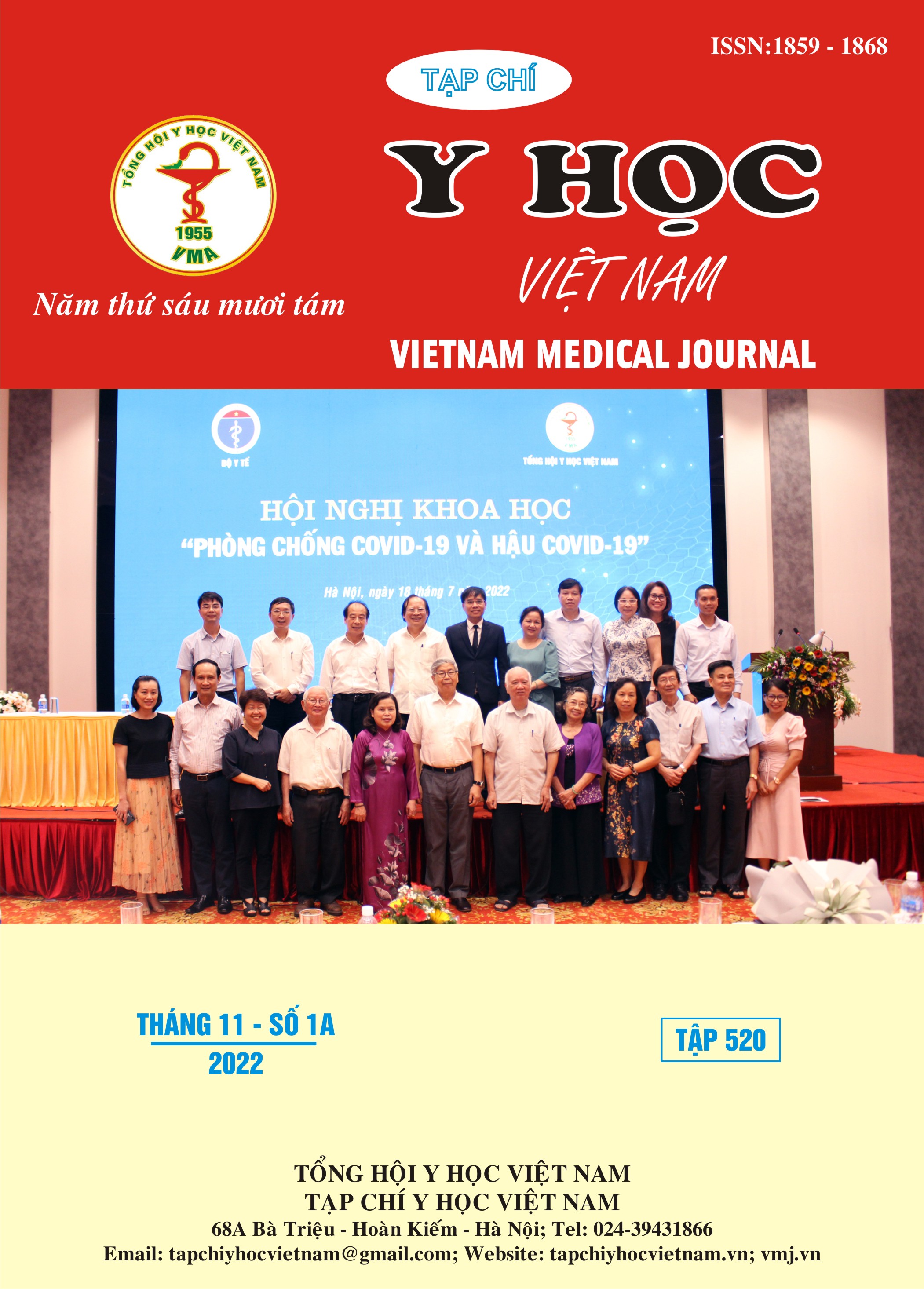SITUATION OF LOWER EXTREMITY CHRONIC VENOUS INSUFFICIENCY AMONG GARMENT WORKERS IN THAI BINH PROVINCE
Main Article Content
Abstract
The study was conducted on 400 garment workers of 4 garment companies in Thai Binh by the descriptive method through a cross-sectional survey with an aim to describe the status and clinical and subclinical characteristics of chronic venous insufficiency. lower extremities in workers in some Thai Binh garment companies. Results: The proportion of lower extremity chronic venous insufficiency in the study group was 75.3%; The difference in the prevalence of lower extremity chronic venous insufficiency was statistically significant between the groups of gender, working position and career age. The percentage of lower extremity chronic venous insufficiency among the group of workers with working age under 5 years accounted for 63.2% and up to 82.8% in the age group of 15 years or more. Workers who work regularly in the standing position had a higher incidence of lower extremity chronic venous insufficiency than those who frequently worked in the sitting position (86.7% and 68.9%). Most of the male workers had no or only 1-2 clinical symptoms, the percentage of having 3 or more symptoms was higher in female workers than that of male workers, the difference was statistically significant with p< 0.05. The results of classifying lower extremity chronic venous insufficiency according to the CEAP scale of workers from C0 to C3, the highest proportion in the study were workers in clinical class C1 (61.8%); No patients with lower extremity chronic venous insufficiency were found in CEAP grades from C4. The average VCSS score of workers with chronic venous insufficiency of the lower extremities was 3.69 ± 1.08 points
Article Details
Keywords
Garment workers, Lower extremity chronic venous insufficiency, Thai Binh
References
2. Urbanek T và các cộng sự. (2015), "Assessment of public awareness in the field of epidemiology, prevention and treatment of chronic venous diseases in Poland", Phlebological Rev 23 (2), tr. p. 45-53.
3. Eberhardt RT và Raffetto JD (2005), "Chronic venous insufficiency.", Circulation. 111, tr. p. 2398-409.
4. Dinh Thi Thu Huong và Dinh Thi Hoa Hiep (2012), "Vein consult program", Phlebolymphology. Vol19, No3.
5. Robertson L và các cộng sự. (2009), "Risk factors for chronic ulceration in patients with varicose veins: a case control study", J Vasc Surg. 49(6), tr. p. 1490-1498.
6. Sudoł Szopińska I, Błachowiak K và Koziński P (2006), "Influence of environmental factors on the development of chronic venous insufficiency", Med Pr. 57(4), tr. p. 365-373.
7. Sharma S (2013), "Certain profession of working as risk factors for varicose veins.", J Pharm Biol Sci. 7(5), tr. p. 56-59.
8. Yun MJ và các cộng sự. (2018), "A study on prevalence and risk factors for varicose veins in nurses at a university hospital. ", Saf Health Work. 9 (1), tr. p. 79-83.
9. Đinh Thị Thu Hương (2019), Bệnh tĩnh mạch chi dưới mạn tính, Lâm sàng tim mạch học, NXB Y học, Hà Nội.
10. Nguyễn Thị Ngân, Trần Thị Quỳnh Chi và Nguyễn Trường Sơn (2014), "Thực trạng và một số yếu tố liên quan tới bệnh giãn tĩnh mạch chi dưới của công nhân công ty May Hai, Hải Phòng", Tạp chí Y học Việt Nam. tháng 10- số 2/2014, tr. tr. 233-241.


